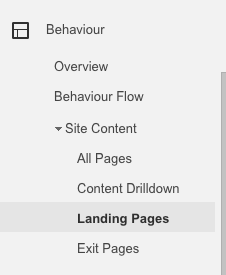On day one of SEO school we’re taught about an important metric: bounce rate. Bounce rate is the percentage of visitors to your site which leave after only viewing one page, so something is causing them to ‘bounce’ without engaging with your content. Whether this is down to poor design, irrelevant content or a lack of product, it is clearly catastrophic! A high bounce rate should set alarm bells ringing! High bounce rate = very, very bad.
But what if it’s not as black and white as that?
At addmustard, we believe in questioning the process, so we set out to establish whether the industry is simply worrying too much about bounce rates. When we work our way down the checklist of ‘reasons your users may be bouncing’, ticking off items one by one, and still don’t see our bounce rate diminish, are things really as bad as we think? Perhaps, just perhaps, it’s possible a user can leave a website satisfied, after hitting just one web page…
WHAT IS A BOUNCE RATE?
Shown as a percentage, bounce rate is the number of users who leave your site after viewing only the page they landed on. In short, they supposedly leave without interacting.
So, if 90 out of 100 visitors to your site click away after landing, you’ll have a bounce rate of 90%…which, when it comes to the SEO rulebook, is cataclysmic.
UNCOVERING THE DATA
There are a number of reasons users tend to bounce. So it’s crucial to investigate further into why your users may be bouncing from your site. This analysis needs to be conducted on a page-by-page basis ideally.

The great thing is that every marketer already has the tool needed to generate this data: Google Analytics. It’s simple to navigate to Behaviour>Site Content>All Pages (or alternatively Landing Pages) and then apply a filter (under advanced) to only pull bounce rates above a certain percentage. You may also want to filter out those who bounced after an extended period of time, as it’s a safe assumption that they engaged with your content before leaving your site.

This will leave you with a list of pages you can work through on an individual basis to note issues and assign actions.
SO WHAT CAUSES A HIGH BOUNCE RATE?
Some potential reasons for users bouncing are:
- Poor site design or page hierarchy: If your landing page is difficult to read and navigate, or the user can’t find their way to the next page.
- An irrelevant landing page: If your site is ranking for a term that’s irrelevant to your product or service, users will expect one thing but be delivered something else.
- Poor, thin or overwhelming content: No one can be bothered to trawl through endless sentences of bunched-up content, or content of a bad quality. On the other hand, if the content is underwhelmingly thin, it’s unlikely you’re going to engage a reader for very long.
- Slow page speed: The slower the page load time, the higher the bounce rate. A few years ago, 4 seconds was the measuring stick, but that’s constantly dropping lower and lower.
- Ill-planned device compatibility: No matter how aesthetically pleasing your desktop site is, if it’s unresponsive, your mobile bounce rate will soar.
But there’s a potential 6th reason.
- Your page is answering the user’s intent almost instantly: Users rarely sit and scroll on mobile devices when they’re on the go. So if your landing page answers a user’s query promptly, without their needing to delve further into the site, they’re probably going to ‘bounce’… but boy will they be satisfied.
If we’re being traditional SEOs – a high bounce rate should always ring alarm bells. However, if we put down our textbooks and begin to think about it, there are scenarios that could be the exception to the rule.
Today, mobile search queries outrank desktop. We relentlessly turn to our mobiles with questions on the go, seeking speedy responses: location-based queries, searching for a phone number, or a recipe to cook that evening. If we really think about it, in these scenarios what is it that we’re after? A short, sharp and quick response, one which we can absorb and move on from.
If the page we are served and the information we digest answers this, we navigate away from the page (almost instantly) to continue with our day, our intent has been answered…. and yet bounce rate skyrockets.
So in short, yes, a high bounce rate can sometimes be okay.
KNOWING WHEN THE BOUNCE RATE ALARM BELLS SHOULD RING
The key is to analyse these metrics on a case-by-case basis. A 65% bounce rate on a product page is typically cause for concern, but a 65% bounce rate on a blog page can be seen as reasonable. Remember, you can analyse your bounce rate for desktop and mobile individually, which allows you to a) understand which pages are causing users to bounce, and b) if this varies by device.
Heat map tools are a useful asset here, as they allow you to see your users’ activity on a page by page basis. This means you can assess whether users engage with the page at all before they bounce.
The below heat map has recorded user behaviour on mobile. You can see a high percentage of users have navigated to the phone icon, which indicates that some of these users would fall within the bounce rate percentage. However, in reality, a proportion of these would have come to the site looking for contact details, which they found almost instantly.

It’s important to consider your conversion rate in relation to your bounce rate. If your conversions are unaccountably low, and your bounce rate is sky high, it’s likely something on your site needs addressing. Also look at the average time on page as guidance for engagement, as this can indicate whether users are reading your content before they leave, or bouncing immediately.
There are plenty of in-depth guides online advising how to lower your bounce rate, but a good place to start is to:
- Review, and potentially simplify, your design
- Assess readability
- Check your keyword relevancy
- Ensure your images are optimised
- Avoid pop-ups
- Make sure your navigation is intuitive
IN SHORT
If your analytics show a page with a high conversion rate and high engagement, we can quite safely say that it’s performing successfully regardless of a high or low bounce rate. Poorly performing pages may deliver high bounce rate, but a high bounce rate doesn’t automatically mean the page is poorly performing. But it does mean that a deeper dive into your data is required.
When looking at your Google Analytics data, think about the goals of your website, and perhaps even try taking your SEO hat off and question your business objectives. There are no set rules for every website to follow, so you need to assess what works for your business, and then address what doesn’t. If there’s anything we should know by now in digital marketing, it’s that nothing is black and white.









